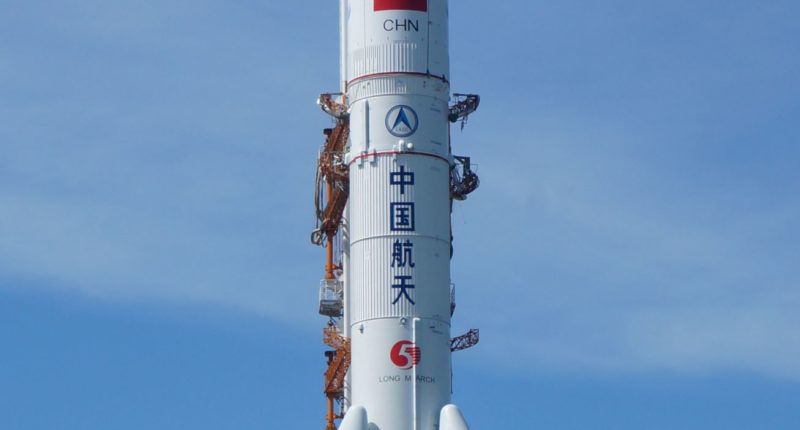The Space race was originally between the US and the former Soviet Union, with both countries trying to exert their domain on the empty vast space. However, decades later, many more countries have come up with advanced space programs, notable of them being those from Japan, India and China.
The Chinese, have come up with a major space launch announcement today, which could well turn out to be perhaps country’s most historic milestone yet. The Chinese National Space Administration, or the CNSA, has recently completed a demo flight for its crew spacecrafts, carried by the new and improved Long March 5B rocket. More than the crewed spacecraft, it was the Long March 5B launch that was crucial.
The Long March 5B is a crucial piece of China’s space exploration plans in the coming decades. The rocket will be used by the country to launch its Mars mission — dubbed Tianwen — later this summer. The same rocket will also be used by China to put in place, its indigenously developed space station in the lower earth orbit by 2022. The Long March 5B has a capacity to lift upto 25 tons of payload up until the lower earth orbit.
Today’s flight took off from the Wenchang Space Launch Center on the coast of southern China’s island province of Hainan at 6 p.m. (Beijing Time). Wenchang Space Launch Center is the country’s newest spacecraft launch site. This operation was conducted without any personnel on deck. At about the 488 second mark, the test version of the cargo return capsule separated with the rocket and entered the planned orbit. Lift-off of today’s mission occurred at 6 p.m. local time (6 a.m. EDT, 1000 GMT). Assuming the rest of the crew capsule’s flight goes smoothly, today’s success will open the door to a slate of 11 launches designed to facilitate space station construction, Zhou Jianping, chief designer for the crewed program, said in a statement.

The Long March-5B carrier rocket is China’s newest gladiator, as it made improvements over the already outstanding Long March 5 rocket. The Long March 5-B will be specifically used for the space station project, and for the time, will focus all its attention on carrying modules for the space station.
“The new large rocket has a total length of about 53.7 meters, which is as tall as an 18-floor building, and has a 5-meter-diameter core stage and four 3.35-meter-diameter boosters, as well as a 20.5-meter-long and 5.2-meter-diameter fairing,” reports XinhuaNet, the official state run press agency of China. “The rocket uses environment-friendly propellants, including liquid oxygen, liquid hydrogen and kerosene. It has a takeoff mass of about 849 tonnes and is able to send over 22 tonnes of payloads, equivalent to the weight of more than 10 cars, to low-Earth orbit, which is currently the largest low-Earth orbit carrying capacity among China’s rockets,” the report added.
The crew capsule will conduct missions in low Earth orbit, which is the destination for the Chinese space station. The successful launch of this capsule will allow China to send 6 people on a single mission. Compared to the current capability of 3 that Shenzhou(the current crew capsule) provides, this will be a significant jump. China plans to conduct launches aimed at reaching the Moon with this advancement.
During this test run, significant breakthroughs have been achieved, including separation of the large fairing and the payloads in space and the precise control of the rocket to enter orbit directly with high thrust, laying the foundation for constructing China’s space station, CMSA said.
The Tech Portal is published by Blue Box Media Private Limited. Our investors have no influence over our reporting. Read our full Ownership and Funding Disclosure →






